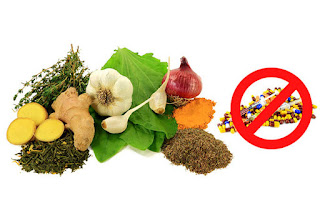9 All-Natural Antibiotics Provided By Mother Nature
There are many infections that go around whether they are bacterial or viral (or fungal), the first thing they do is go right to the doctor, as they should.
However, the problem with synthetic antibiotics is that they can only work for so long – eventually, resistance is developed which means they no longer are useful if they are used too often. This is why you are going to know about the 9 all-natural antibiotics made by Mother Nature that are powerful and have been forgotten about:While we are talking about health crazes, let’s look at apple cider vinegar. Touted for everything from weight loss to cancer prevention, proponents report that their ACV habit cures all manner of ills.
We do know that ACV has antibiotic and antiseptic capabilities, so whether or not you want to drink some every day, it’s a smart call when you start to feel under the weather.
2. Coconutoil
Coconut oil has been touted for a few years now as a miracle product that’s good for your body inside and out. And in truth, coconut oil is loaded with antioxidants and has anti-fungal and anti-microbial characteristics.
Modest use may also help strengthen the immune system. But it is quite high in saturated fat, so it’s best to go easy on oil.
3 .Grape Seed Extract
Stop throwing away the seeds from your morning grapefruit! Extract from those seeds has been found to be as powerful as the active ingredients in antibacterial soaps.
Grapefruit seed extract may be used internally for bacterial infections or externally for warts and communicable disease prevention.
4. Ginger
Ginger is an excellent spice to eat every day. Its active component, gingerol, has been proven to reduce your risk of developing cancer and to prevent or soothe digestive issues.
Ginger has also been long used as a natural antibiotic, especially against food borne pathogens. If you eat a little ginger with meals, the likelihood of becoming ill goes down, even if you were exposed to salmonella, listeria, or campylobacter.
5. Cabbage
In many situations, the tendency of cabbage and other veggies in the cruciferous family to blow up your intestines with gas is well, not so good. But when you’re trying to fight bacteria, it’s just what you need.
The sulfur compounds in cabbage do cause gas, but they are also stellar at destroying harmful cells. The antibacterial function of cabbage is strongest when you eat it raw.
6. Cayenne Pepper
This one is a bit counterintuitive, as we are usually advised to keep things bland when we’re sick. But spicy cayenne pepper is actually both antibiotic and anti-fungal in nature, so you might want to feel the burn to shorten the illness.
It’s best to dilute your cayenne with a carrier oil – olive or coconut are good choices – so that you get the benefits without harming delicate tissues.
7. Echinacea
Echinacea is one of the best known natural remedies, but many people use it to treat the virus that causes the common cold – a use that research suggests is not effective.
Instead, take Echinacea if you have a bacterial infection, open wound, or blood poisoning. It is also particularly effective on respiratory infections.
8. Oregano
Oregano is another tasty natural antibiotic, a benefit linked to its carvacrol content. This natural antibiotic is good for all sorts of bacterial infections, but is especially lauded for its use in GI tract infections.
For best results, look for oregano oil that contains at least 70% carvacrol. This product is also anti-fungal, so you can use it topically for skin issues as well.
9. Garlic
Garlic is an all-around superfood. Not only has it been used as a natural antibiotic for hundreds of years, it also has anti-viral, anti-fungal, and antimicrobial properties.
This is thanks to a compound called allicin (also present in onions). To fight infection, use crushed garlic either lightly cooked or raw.




Comments
Post a Comment